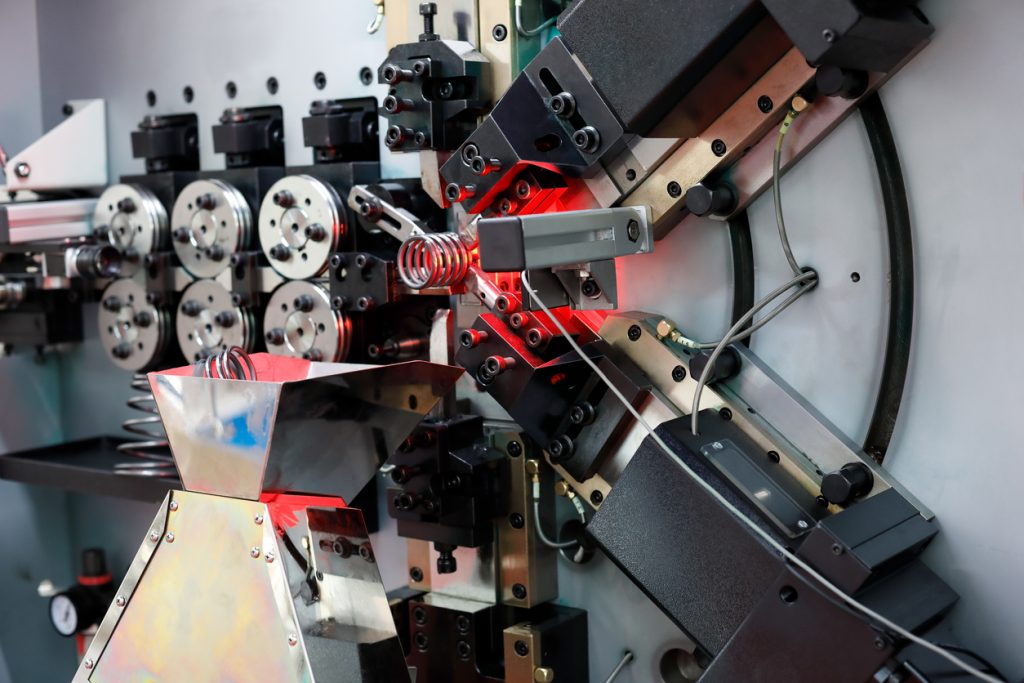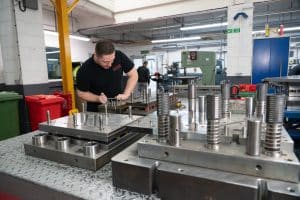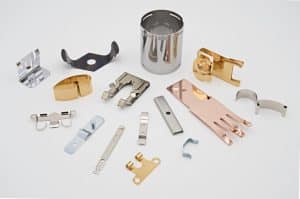A buckling spring is a specific type of keyswitch mechanism that became widely used for keyboards — following the success of International Business Machines Corporation’s (IBM’s) keyboards for the PC, PC/AT, 5250/3270 terminals, PS/2, and other systems.
The name ‘buckling spring’ refers to the coil spring that is fixed between the keycap and the buckles. The mechanism provides tactile and auditory feedback as the person typing on the keyboard pushes it down. When it buckles, the hammer pivots with the motion of the spring and makes electrical contact, registering the keypress.
So, in this article, we will explore buckling springs, a type of compression spring that is specifically used in keyboards.
Buckling Springs in Keyboards
The buckling spring keyboard was one of the first keyboards ever released, and its design still has an influence on the modern layout of the keyboards we use today.

The name ‘buckling spring keyboard’ describes how the piece of equipment functions — using a key switch mechanism (as mentioned above). Every time you press down on the keycap, the spring is compressed inside.
Using Simple Mechanisms to Complete Everyday Tasks
Buckling spring keys are much taller than modern-day keyboards and, because of this, you have to press down a little harder on the keys to register typing. However, buckling springs are very reliable, and once you get into a flow of pressing keys with the right amount of downward force, it will register that you are typing. Not only this, but many people prefer buckling spring keyboards because of the sound they make. Some say it is satisfying, and the sound alone can motivate you to type faster or get into a rhythm.

Many typists prefer to use traditional buckling spring keyboards. However, some people claim that they find using these keyboards tiring — possibly due to the frequency of using modern keyboards or tapping on phone screen keyboards.
The most common and best technique for operating a buckling spring keyboard is to allow your hands to float over it so that when you press down on the keys, force is also exerted from your hand. If you prefer to type with your wrists fixed on your desk, then you may find you will get tired quicker when using this style of keyboard.
With the shift to home working as a result of the Covid-19 pandemic, many people are now working from home on computers with a buckling spring keyboard — though new technology is just as popular.
Springs Used Throughout a Variety of Industries
We’re compression spring manufacturers, and our products are produced in a range of different materials, from stainless steels and non-ferrous metals such as phosphor bronze and beryllium copper to superalloys like inconel, hastelloy and nimonic, so we’re able to create some of the finest springs in the whole of Europe.

We take great pride in ensuring that we are capable of meeting all of our client’s requirements. Whether you’re looking for specific body size, force, length or pitch or wire diameter, as one of the best European spring manufacturers, we’re able to provide you with a range of spring dimensions from 0.1-65 millimetres for your individual use. All of our compression springs are quality assured and comply with ISO:9001 standards.
We hope you learned something new about buckling springs in this blog. As experienced spring manufacturers, we see many uses for our springs throughout a wide range of industries.
Take a look at our stock catalogue for more information on our range of springs and forms including tension springs, torsion springs and die springs. Alternatively, get in touch with us directly at info.bec@happy-northcutt.194-164-31-150.plesk.page – we’d be happy to hear from you.



